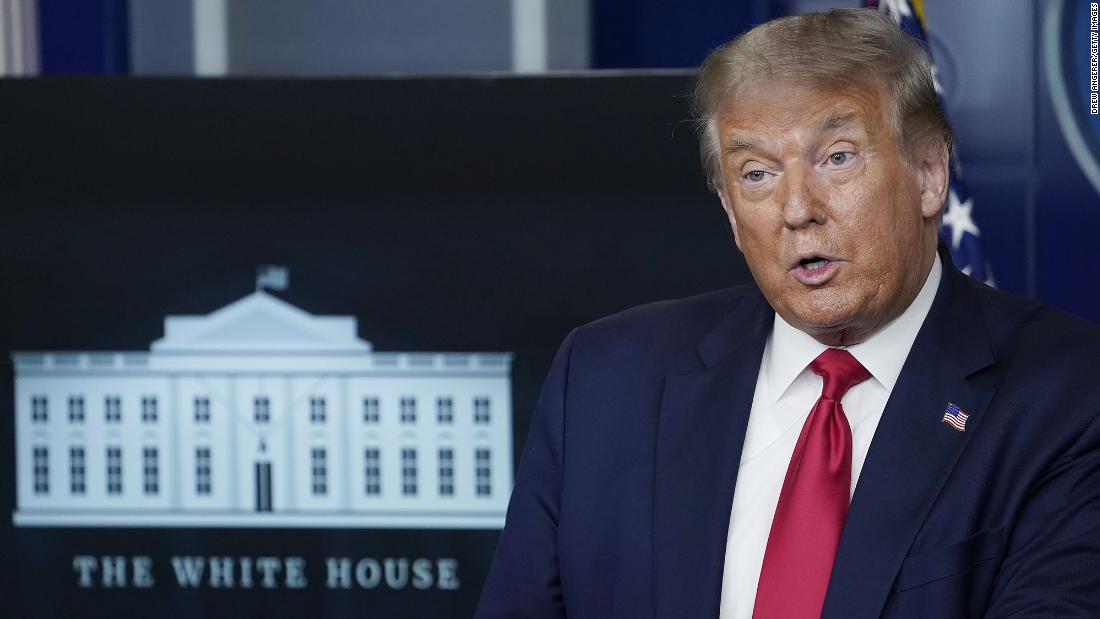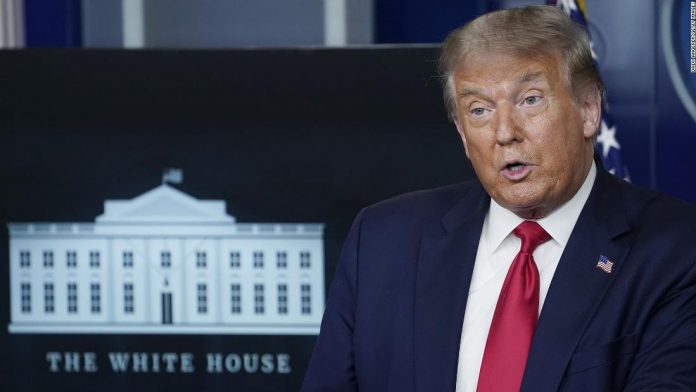
Every time President Donald Trump and his political team claim great progress in the pandemic it’s a dangerous sign: things are likely about to get worse.
Forever spinning their failure in handling the crisis, Trump and Vice President Mike Pence on Monday made selective claims of “significant” advances and “very encouraging” signs and celebrated “plateauing” cases in sunbelt areas that might have escaped their disasters by ignoring the President’s advice.
Their cheerleading clashed with forecasts from government health experts that 1,000 Americans a day will die from Covid-19 in coming weeks, and an alarming warning from Dr. Deborah Birx, which led Trump to effectively brand the 40-year public health servant in a tweet as “pathetic.”
The President also renewed blatantly false claims that the United States had done a better job than many other countries that are now seeing flareups of the disease that pale in comparison with the disaster in the southern United States.
In a news conference packed with dubious superlatives and gushing praise for his government’s work in fulfilling routine procurement tasks, Trump sketched a completely different reality from the one unfolding across the nation.
Perhaps the most concerning aspect of his briefing was not the massive misrepresentations but that the White House is so confined to its constantly tested Covid-19 bubble that it actually believes its own propaganda.
“We are beginning to see evidence of significant progress nationwide,” Trump said, five months into a pandemic that he initially denied, and then neglected.
“An encouraging sign. Very encouraging,” Trump said, after cherry picking data and praising governors of Florida, Arizona and Texas — who allowed the virus to sweep through their states — for doing a “tremendous job.” He went on: “The virus is receding. In hot spots across the south and west, we’ve seen slow improvements from their recent weekly peaks.”
“I think we are doing very well and I think … as well as any nation,” Trump said baselessly, given that the United States has less than 5% of the world’s population but around 25% of global deaths from Covid-19.
Earlier, Pence also spoke optimistically about the outbreak in southern and western states that enthusiastically embraced Trump’s demands for an early opening and were consequently hit by a deadly wave of infections.
“We are beginning to see not only plateauing but are beginning to see cases declining and emergency rooms decline,” Pence said on a call with governors.
Plateauing, after so much death and at such a high level of new infections in southern states is welcome. But it’s hardly a cause for celebration, given that infection rates would not have been so severe with proper virus management.
Trump and Pence vs. the experts
The President and Pence, razor focused on the election in exactly three months, spoke in a way that implicitly disregarded and may well have been intended to counter the warning of Birx, the coronavirus task force coordinator who said on CNN Sunday the virus was in a “new phase” as it bears down on rural areas where health care is often rudimentary.
Trump earlier complained that Birx had been drawn into criticizing the administration because Democratic House Speaker Nancy Pelosi accused her of being too positive.
“Deborah took the bait & hit us. Pathetic!” Trump wrote.
But Birx’s remarks were reinforced Monday by the government’s top infectious disease expert Dr. Anthony Fauci, no stranger to presidential rebukes, who painted a picture of an out-of-control pandemic.
“When you have community spread, it’s much more difficult to get your arms around that,” Fauci said during a news briefing with Connecticut Gov. Ned Lamont, a Democrat.
“When you have community spread, it’s insidious. There are people who are spreading it who have no symptoms at all, and we know that definitely occurs. It’s difficult to identify it, and it’s difficult to do identification, isolation and contact tracing,” Fauci added.
Trump appeared to get the message that the spreading of the virus in heartland areas would be damaging for him politically. He repeatedly used the word “rural” during his news conferences to stress his government was in control.
But for yet another day, message coming from the administration’s top political hitters and the medical experts was plagued by contradictions, not least because Trump seeks to obscure the real story with his daily briefings.
“What jumps out to me is we are in a crisis situation in America and we are hearing a narrative that doesn’t recognize that,” said Dr. Richard Besser, former acting director of the US Centers for Disease Control and Prevention on “The Situation Room with Wolf Blitzer.”
There are some encouraging signs in the seemingly endless fight against Covid-19. States such as New York, which ignored Trump’s demands for early opening — part of a federal approach its Democratic Gov. Andrew Cuomo said Monday was the “worst government blunder in modern history” — are doing well.
New infections are falling in Arizona, Texas and Florida, even though they remain at levels that suggest the downward curve will be prolonged.
But at least 30 states suffered higher rates of new deaths this past week compared to the previous week, according to data from Johns Hopkins University.
In 12 of those states, the increase in deaths was at least 50%: Washington, Idaho, Montana, South Dakota, Texas, Mississippi, Michigan, Ohio, Maine, Virginia, West Virginia and Alaska.
And test positivity rates — an indicator of how rampantly a virus is spreading — remain stubbornly high in more than 30 states.
Multiple victory laps
Throughout the pandemic, the administration has been desperate to proclaim victory and great progress and to move on, while pocketing a political victory that is incompatible with the facts of the virus.
From the same podium in the White House Briefing Room in mid-April, Trump signaled to Americans that their brief fight against the virus was already over.
“Now that we have passed the peak in new cases, we are starting our life again,” Trump had said. “We are starting rejuvenation of our economy again,” he said, while declaring the US would experience far fewer deaths than predicted. At that point, the disease had killed 30,000 Americans. Less than four months later, 155,000 are dead.
One month later, in May, and after the death toll from Covid-19 reached 80,000, the President was back with another “mission accomplished” moment.
“We have met the moment and we have prevailed,” he declared, though he later tried to walk back the remark by saying he was referred to testing. In that event, it was a distinction without a difference since health experts say that now, even in early August, the US still lacks a national testing and tracing operation.
As on Monday, Trump’s victory lap at that moment was contradicted by a warning from Fauci that was proven right by events.
“If we skip over the checkpoints in the guidelines to: ‘Open America Again,’ then we risk the danger of multiple outbreaks throughout the country,” Fauci wrote in a May email to The New York Times that proved to be exactly correct.
“This will not only result in needless suffering and death, but would actually set us back on our quest to return to normal,” Fauci had added.
Pence has also been guilty of misrepresenting the facts from his position as the head of the White House’s coronavirus task force.
Just six weeks ago, the vice president penned an op-ed for the Wall Street Journal in which he castigated the media for accurate reports about a building disaster in southern and western states.
“In recent days, the media has taken to sounding the alarm bells over a “second wave” of coronavirus infections. Such panic is overblown,” Pence wrote.
“We are winning the fight against the invisible enemy.”
Such commentary by the people in charge of stabilizing America during the worst domestic crisis since World War II is one reason that their politically motivated forecasts of imminent victory may have the opposite of their intended effect.
The post Analysis: Trump spinning virus failure as a win again by celebrating ‘encouraging’ progress appeared first on CNN.







